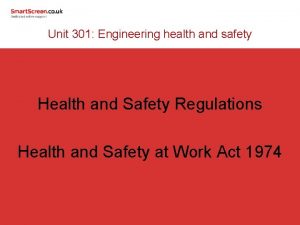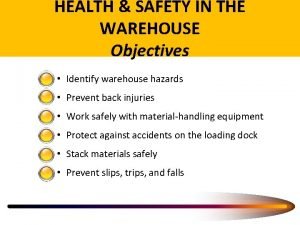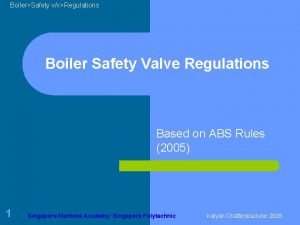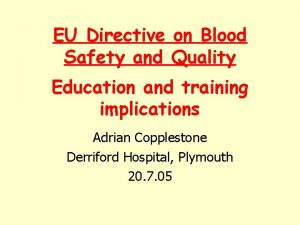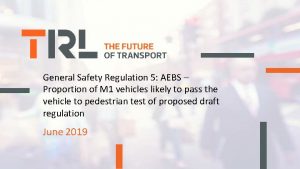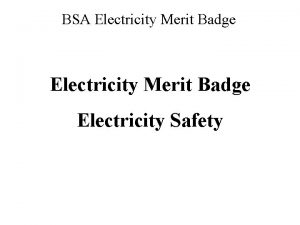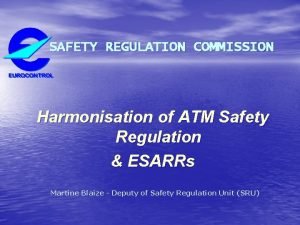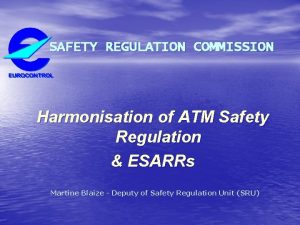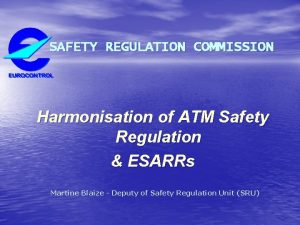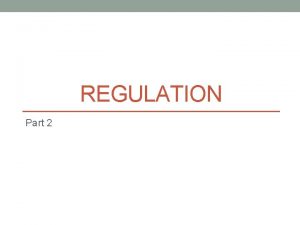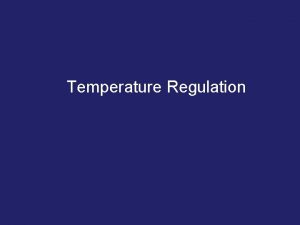Electricity Safety Regulations Electricity Safety Regulation 33 states
















- Slides: 16

Electricity (Safety) Regulations � Electricity (Safety) Regulation 33 states that any power or telecommunications construction must not cause any induced voltage or EPR that is LIKELY to cause danger to persons or damage to telecommunications plant � Induced voltages that do not exceed 430 V for durations > 0. 5 s (and 5 s) 650 V for durations 0. 5 s are DEEMED not to be likely to cause a hazard to persons or damage to telecommunications plant 1

Hazard Assessment Options 1. Comply with the 430 V / 650 V ‘deemed to comply’ hazard voltage limits in ESR 33 2. Comply with other authoritative international Power Co-ordination hazard voltage limits (e. g. ITU-T Directives Vol. 6: 2008) 2

3. Comply with a (yet to be developed) authoritative NZ specific set of Power Coordination hazard voltage limits, calculated from IEC 60479 -1: 2005 on a similar basis to the limits in the EEA ‘Guide to Power System Earthing Practice’ 2009, and the ITU -T Directives Vol. 6: 2008 4. Demonstrate by way of a Risk Analysis that the hazard is not likely to occur. 3

IEC 60479 -1: 2005 �IEC 60479 -1 ‘Effects of current on human beings and livestock, Part 1 General aspects’ is the ‘bible’ on electricity hazard to humans. �The ITU-T Directives Vol. 6: 2008 and the EEA ‘Guide to Power System Earthing Practice’ 2009, both calculate their human hazard voltage limits based on data from this IEC standard. 4

�The Electricity (Safety) Regulations 2010 specifically refer to this standard (as the ‘IEC shock currents standard’) �Any future NZ specific set of Power Coordination human hazard voltage limits will similarly be calculated based on data from IEC 60479 -1: 2005. �IEC 60479 -1: 2005 is also published as AS/NZS 60479. 1: 2010. 5

6

7

8

9

10

11

Comparison with IEEE body current curves 12

ITU-T Directives Hazard Limits Fault Duration (s) ITU-T Directives (V) NZ ESR 33 (V) Australia (V) Japan (V) t ≤ 0. 2 1, 030 650 1, 500 430 0. 2 < t ≤ 0. 35 780 0. 35 < t ≤ 0. 5 650 0. 5 < t ≤ 1. 0 430 1. 0 < t ≤ 3. 0 150 3. 0 < t ≤ 5. 0 60 t > 5. 0 300 1, 000 430 60 60 60 13

Risk Analysis Equivalent Risk Classification Probability for Individual Death (per annum) > 10 -4 - 10 -6 < 10 -6 Resulting Implication for Hazard Mitigation High Intolerable Must prevent occurrence regardless of cost Intermediate ALARP for Intermediate Risk Must minimise occurrence unless risk reduction is impractical and costs are grossly disproportionate to safety gained Low ALARP for Low Risk Minimise occurrence if reasonably practical and cost of reduction is reasonable 14

� Use of calculated risk levels to justify a possible hazard situation is still a relatively new approach in the NZ power industry � Quality of risk data is very variable � Probability values used are also very variable � This presents challenges – new area 15

� These voltage limit and risk analysis issues are currently under discussion between the Power and Telecommunications industries in NZ � The results will be detailed in the future NZCCPTS Hazard Assessment Guide (2013? ) � This guide will include Risk Analysis case studies in the Appendices 16
 Static electricity and current electricity
Static electricity and current electricity Current electricity
Current electricity Magnetism vocabulary
Magnetism vocabulary Health and safety regulations in engineering
Health and safety regulations in engineering Six pack health and safety regulations
Six pack health and safety regulations Warehouse health and safety regulations
Warehouse health and safety regulations Food safety regulations and standards
Food safety regulations and standards 6 pack regulations
6 pack regulations Canada motor vehicle safety regulations
Canada motor vehicle safety regulations Boiler accumulation test
Boiler accumulation test Army motor pool sop
Army motor pool sop Work health and safety regulations 2012 sa
Work health and safety regulations 2012 sa Blood safety and quality regulations
Blood safety and quality regulations General safety regulation
General safety regulation General safety regulation
General safety regulation 11 free states
11 free states Southern vs northern states
Southern vs northern states



